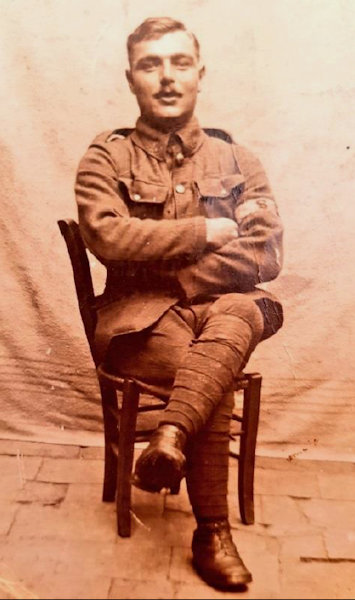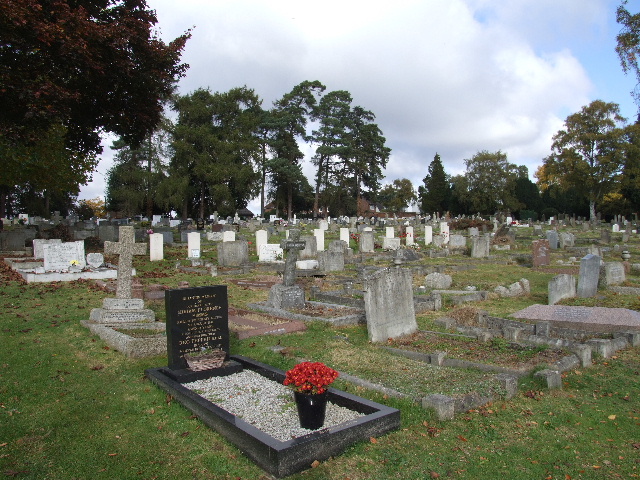Name
William Jeffrey Sell (MM)
Conflict
First World War
Date of Death / Age
18/08/1918
Rank, Service Number & Service Details
Private
265330
Bedfordshire Regiment
5th Bn.
Awards: Service Medals/Honour Awards
1914 (Mons) Star, British War and Victory Medals
Military Medal
Cemetery/Memorial: Name/Reference/Country
HITCHIN CEMETERY
West Grave 171
United Kingdom
Headstone Inscription
Not Researched
UK & Other Memorials
Hitchin Town Memorial, 4 Co' Hertfordshire Reg' Territorials’ Memorial, Hitchin, Town Hall Memorial, Hitchin, St Mary's Church Roll of Honour (Book), Hitchin, Hertfordshire Regimental Memorial, All Saints Church, Hertford
Pre War
Wartime Service
As a Territorial William was not obliged to serve overseas, but like so many others volunteered to do so. This small Hertfordshire Regiment, of less than 1000 men, were to be one of the first Territorial Army units posted overseas.
On the 5th November 1914, the Battalion embarked at Southampton aboard the merchant vessel “City of Chester” arriving in Le Havre the following day, where they then marched to Rest Camp No.2. Over the next few days the Battalion travelled by train, bus and foot across France and Belgium until they reached the town of Vlamertinghe. After a long and wet journey, they marched through Ypres to reach their final destination, a location known as Kilo 3, just on the outskirts of the village of Hooge. The Battalion were part of the 2nd Division, whose Headquarters were located in Hooge Chateau.
On the 12th November, the weather began to change, with freezing rain and light snow making an uncomfortable situation even worse for the troops. As the Germans commenced a major attack, the Battalion moved about 2 miles along the Ypres-Zonnebeke railway, where they entrenched themselves in a wood. Here, they experienced severe shelling from German artillery, and in the evening moved back to their bivouacs at Kilo 3. On the 14th November, they marched to a wood named Nonne Bosschen, where they took over trenches from the men of the Oxfordshire & Buckinghamshire Light Infantry, who had managed to stave off a concerted German attack. Of the Battalion’s eight companies, three were in the trenches and five were in support. Just two days later, the Battalion were relieved by the 153rd Regiment of the French Army and again moved back to their bivouacs at Kilo 3.
He is recorded as in France from 4th November 1914 to 2nd August 1917 and on Home service between 3rd August to 14th November 1917, the details are explained below.
His record was not perfect as on 19th June 1915 he was deducted 10 days’ pay for being absent from parade without permission. However, that did not stop him receiving leave to England between 29th November and 6th December 1917.
William became Private 2653306. This was probably in early 1917 when soldiers who had enlisted or were serving in a Territorial Force regiment were issued with a new, six-digit service number or possibly later when he was transferred to the 5th Bedfordshire Reserve (6th September 1917).
He was recorded as being in Boulogne in May 1917, and, on the 7th, as at rest camp “Unfit”. At this time the Hertfordshire Regiment was in and out of the trenches around Ypres. He was then at Calais, on the 10th, before rejoining his Battalion in the field on June 4th.
As part of the Third Battle of Ypres, also known as Passchendaele, the 1st Hertfordshire Battalion were in support of an attack on the Langemarck Line near St Julien, and a general bombardment of the German lines commenced at 3.45am on the 31st July 1917, and the planned assault began. It had three objectives to achieve, known as Blue, Black & Green, and units of the 116th Brigade easily captured the first two objectives, preparing the way for the forward companies of the Hertfordshire Battalion, to take the third objective.
They had marched from Vlamertingue to their assembly position arriving by midnight on the 30/31st July 1917. At 05.00am, after the bombardment, the Hertfordshires left their assembly positions to attack their objective, which lay over the crest of a ridge.
As they made their way forward, they came under heavy fire from both German machine guns and snipers but after eliminating a German strongpoint moved up towards St. Julien, which was only lightly held. The Battalion crossed the Steenbeek river with some difficulty and two of its supporting Tanks became bogged down in the mud. Things then went from bad to worse. A pre-arranged artillery barrage never materialised due to the guns being unable to move forward over the muddy terrain, and the German barbed wire defences, which were fifteen feet deep in some places, were found to still be intact. It was soon realised that ground could only be won by section "rushes" supported by the unit’s own fire.
The Cheshire Regiment were on the right of the Battalion, but the Black Watch, who were due to cover the left flank, had been seriously delayed. This left the Hertfordshire Regiment seriously exposed, the Germans exploited this by bringing a hurricane of fire down upon the stricken troops. This was followed by a German counterattack and by 10.30am it was clear that the objective could not be achieved. Casualties were very heavy with 459 men being killed, missing or wounded. This included 100% of its attacking Officers and about 75% of its Other Ranks.
We do not know exactly what William did during this battle, but it must have been exceptional as he was later awarded the Military Medal for bravery in the field. As recorded in the London Gazette 2nd November 1917. This suggests that it resulted from bravery during the above action. News of his award reached the Regiment on 27th September.
Between August 8th and 27th he was in hospital with a gunshot wound to his hand, this was probably as a result of the above action as they were away from the front line after July 31st.
William was listed as posted on 3rd August 1917, but unfortunately the details are obscured, and then again 6th September 1917, this time to the 5th Bedfordshire Reserve, but the reason is not specified, possibly to do with what happened next.
Additional Information
For more details of his wife Catherine visit the biography link in the text above.
Acknowledgments
Adrian Dunne, David C Baines, Jonty Wild



